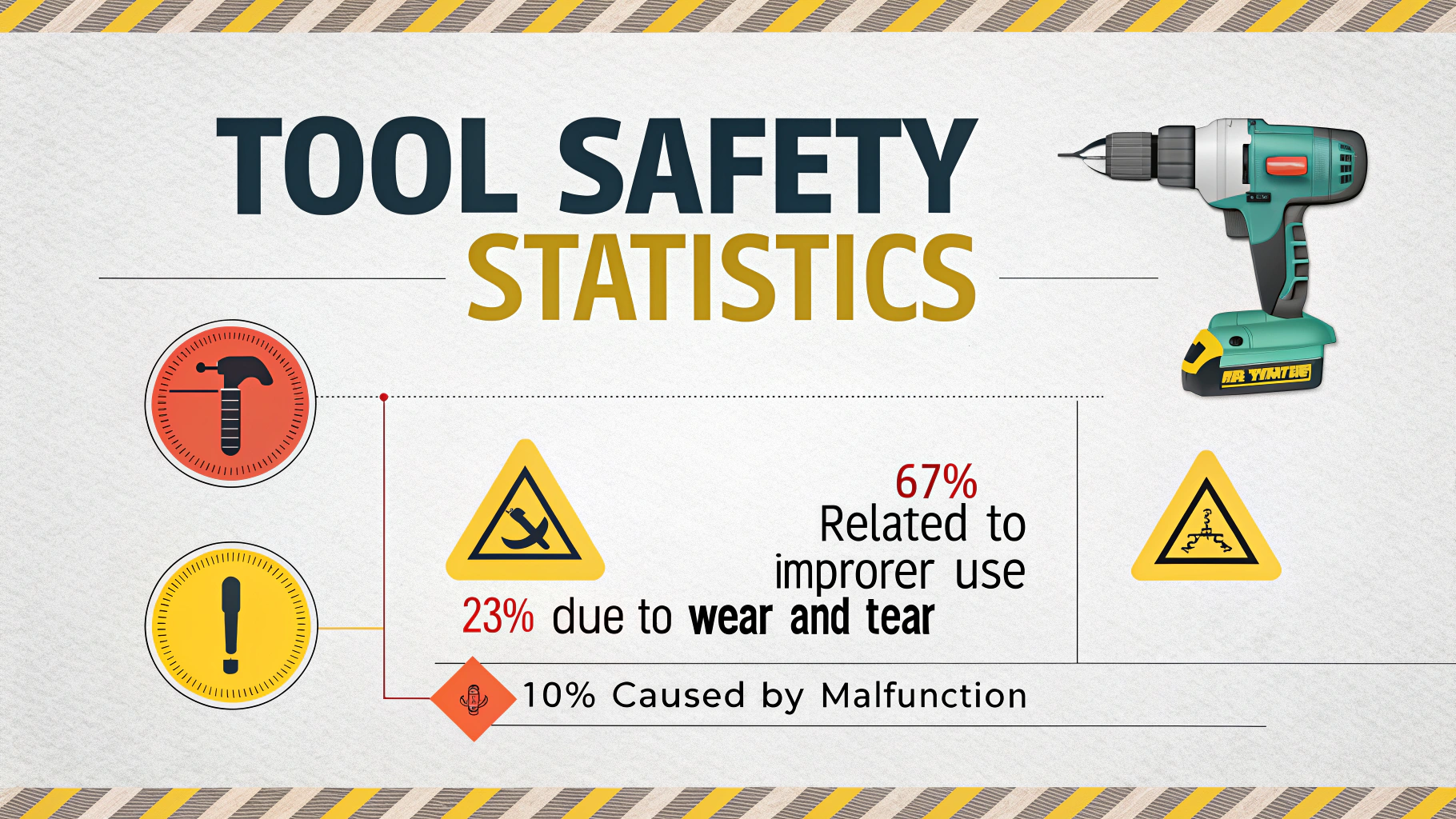On May 12, 2025, a New York carpenter lost three fingers to an unguarded table saw. This was a preventable tragedy that underscores why mastering tool safety is non-negotiable for trades tools beginners. In high-risk fields like construction and electrical work, protocols are the difference between a paycheck and a permanent injury. This guide breaks down the safety fundamentals every newcomer needs, with hard-won industry wisdom and actionable strategies to prevent tool injuries and ensure safe tool operation in trades.
1. Foundational Safety Protocols for Trade Tools
Tool Maintenance: Your First Line of Defense
A frayed cord on a Milwaukee drill sparked a Chicago worksite fire in 2024, proving neglected tools become lethal fast. OSHA’s updated 2025 standards mandate daily visual inspections for cracks, corrosion, and cord damage 1. For trades tools beginners, this means:
-
Testing safety switches on power tools before each use
-
Replacing worn drill bits immediately (a dull edge requires 3x more force, increasing slip risk 2)
-
Logging maintenance dates using apps like ToolTrack Pro

Seasoned welders know this truth: A $20 gear lubrication prevents $200,000 hospital bills.
Safe Tool Operation in Trades
Using tools beyond their limits causes 38% of rookie injuries. That cordless impact driver rated for 1,200 RPM? It’s not a concrete mixer. Key rules for safe tool operation trades professionals swear by:
-
Respect load limits: Overloading angle grinders causes 62% of disc rupture incidents 3
-
Stabilize workpieces: Clamp materials before cutting. Freehand sawing accounts for 71% of laceration ER visits 4
-
Mind your stance: Keep feet shoulder-width apart when using jackhammers to prevent back injuries

PPE: More Than Just Gear
When a Chicago welder avoided hand-arm vibration syndrome during a 10-hour shift using ANSI-certified anti-vibration gloves, he proved PPE’s life-saving power. For trades tools beginners, proper protection includes:
-
Impact-resistant goggles (not safety glasses) for grinding
-
Class III cut gloves when handling sheet metal
-
NIOSH-approved respirators during concrete cutting

OSHA’s 2024 PPE report found proper glove use prevents 83% of hand injuries in plumbing trades 5.
2. Building Safety Habits Early
The Apprentice Advantage
Texas electrical apprentice Mia Rodriguez credits her injury-free streak to OSHA’s 10-Hour Construction Course. “Learning lockout/tagout (LOTO) procedures stopped me from touching live wires day one,” she says.
Learning lockout/tagout (LOTO) procedures stopped me from touching live wires day one
Key training pillars for safe tool operation trades:
-
Weekly tool hazard workshops
-
VR simulations of emergency scenarios
-
Mentor-led equipment walkthroughs

Smart Practice Strategies
Denver contractors now use augmented reality platforms like TradeSafe AR to simulate table saw kickbacks. Beginners master:
- Pinch point identification on hydraulic presses
- Proper nail gun stance (20° offset from workpiece)
- Emergency shutoff drills timed under 3 seconds
A 2025 NSC study showed AR training reduces rookie errors by 67% 6.
3. Preventing Tool Injuries Through Design
High-Risk Scenarios Solved
- Circular saw lacerations: Install riving knives and use push sticks. This can reduce cuts by 89%
- Jackhammer vibration injuries: Limit shifts to 2-hour intervals with anti-fatigue mats
- Drill press entanglement: Magnetic chuck guards prevent loose clothing snags
4. The Maintenance-Productivity Link
A 2024 Harvard Business Review study revealed contractors with strict tool inspection routines complete projects 14% faster. Why?
5. Evolution of Trade Safety
From OSHA’s 1989 LOTO standard (which slashed machinery deaths by 27% 7) to today’s IoT-enabled tools that auto-disable damaged equipment, safety innovation never stops.
Your Next Move
Download OSHA’s 2025 Tool Inspection Checklist and partner with certified trainers through the National Center for Construction Education. Remember, in trades, the true mark of skill is bringing your whole team home safe.

